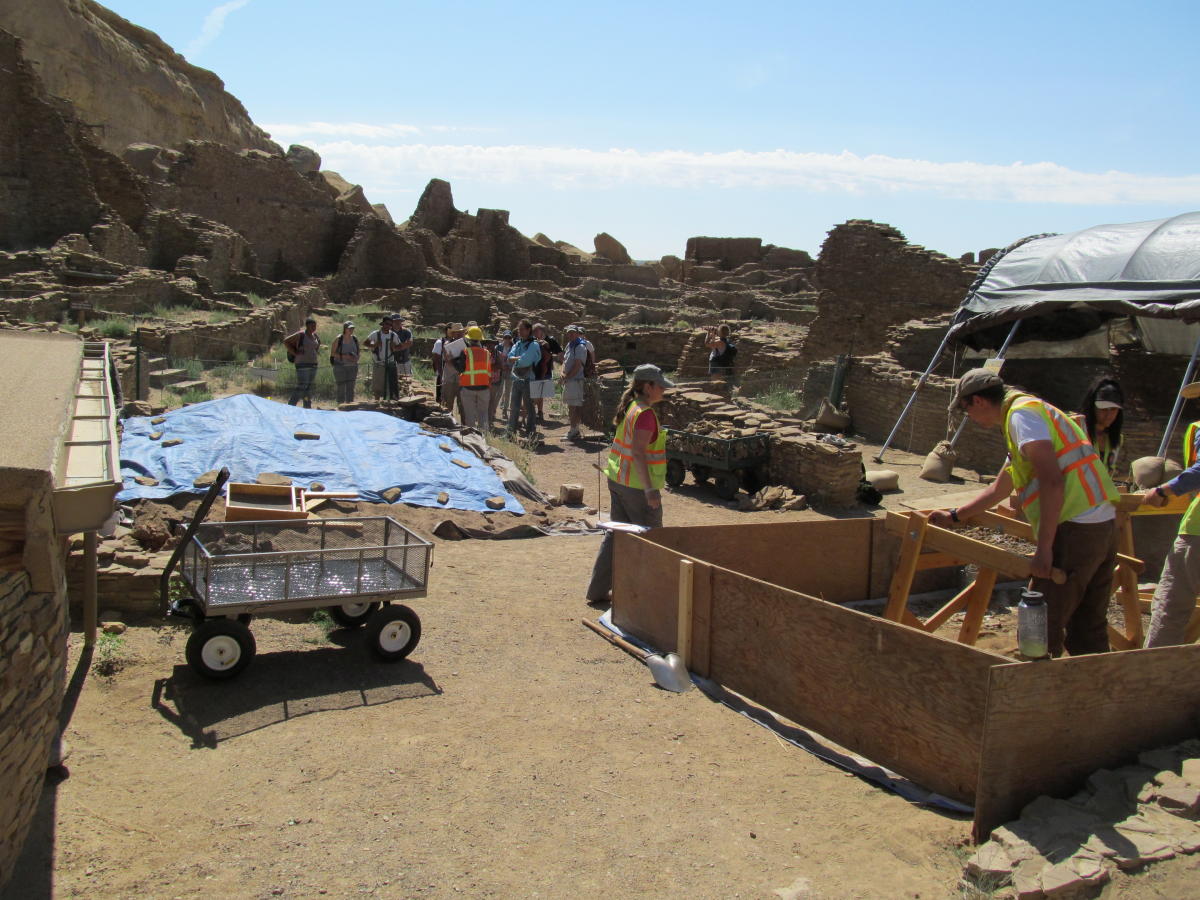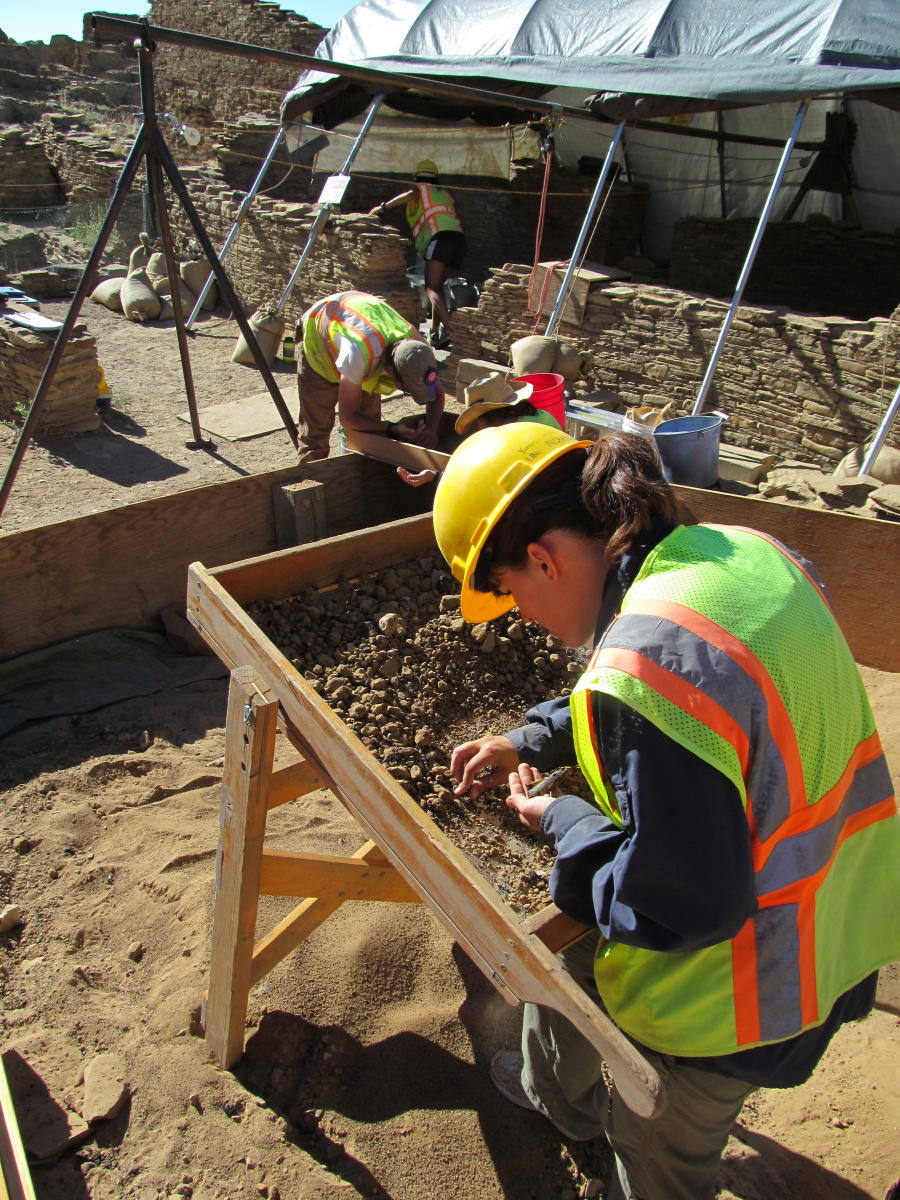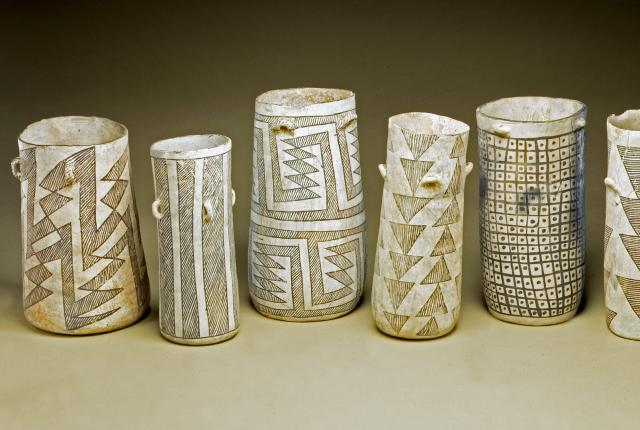More than 100 rare black-and-white cylindrical vases were found in Room 28 of Pueblo Bonito. Photograph courtesy of the American Museum of Natural History Library, ptc-3521.
ENTOMBED IN AN EARTHEN ROOM at Pueblo Bonito in Chaco Canyon, these black-and-white cylindrical vases were revered in Ancestral Puebloan culture. But in AD 1100, the Chacoans lit a fire under the shelf where they were stored, destroying many of the vessels and other wares along with them. Learn about the jars, the room they were found in, and why they burned.
Archaeologist Patricia L. Crown has long loved Chaco Canyon, where she camped with her father as a teenager. Those trips fortified her interest in ancient history, especially Room 28 at Pueblo Bonito (built around AD 800), where 112 rare ceramic vessels were discovered when the Hyde Exploring Expedition uncovered the space in 1896.
 Patricia L. Crown’s research team spent six weeks digging and sifting. Photograph courtesy of Patricia Crown.
Patricia L. Crown’s research team spent six weeks digging and sifting. Photograph courtesy of Patricia Crown.
Painted black and white and twice as high as they are round, the vessels held a secret, as did the room they were buried in. “I wanted to understand more about Room 28, because so many of the vessels were found there,” she says. In 2009, Crown’s investigation found remnants of cacao in one of the vessels, suggesting they may have held drinking chocolate used in ritual ceremonies.
The discovery only led to more questions. “I wanted to understand when it was built, why the jars were in there, and why the room burned,” she says. So Crown returned in the summer of 2013 and spent six weeks exploring. Her findings appear in her new book, The House of the Cylinder Jars: Room 28 in Pueblo Bonito, Chaco Canyon (University of New Mexico Press).

Archeologists sift through earthen material at Chaco Canyon. Photograph courtesy of Patricia Crown.
Why is evidence of cacao in Chaco Canyon so important?
Although other Mesoamerican species and objects were found in Chaco—like scarlet macaws, copper bells, and pyrite mirrors, for instance—no one had thought to look for evidence of cacao before 2009. It adds to our understanding of the past, and the long-distance networks that permitted movement of people, goods, and ideas through this area for centuries.
What did you learn about the burning of Room 28?
In 1050, a shelf that went all the way across the western part of the room was built, and the jars were stored on top of that. Around 1100, two of the three doorways to the room were blocked, and turquoise, shell, and jet beads and ornaments were sprinkled all over the room. Then a fire was lit under the shelving. The fire was extremely hot. The floors, which were sand, actually turned to glass in the heat.
What’s your theory on why it happened?
The vessels were seen as powerful objects, which they can be in many cultures, partly because they were used in this ritual consumption of cacao. For some reason—maybe the ritual practitioner who ran the ceremony died, or something bad happened—the decision was made to terminate the vessels. In order to remove the power and return it to the sky and the earth, the room was burned.
Read More: For Ancestral Puebloans, Chaco Canyon was the center of the world.
Read More: At Los Luceros, New Mexico’s past comes to life in ways both beautiful and complicated.


